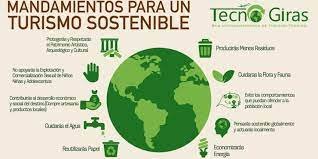Today, the Tourism Sectoral Conference has approved the Programme of Regional Plans which will finance the Tourist Sustainability Plans in Destinations that have fulfilled the required criteria. On the one hand, this programme contemplates the Tourist Sustainability Plans in Destinations that should guide local entities; and on the other hand, Cohesion Actions between Destinations, which will be managed by the Government of Navarra. These actions fall within the credit allocated to the funding of investment actions by local entities within the framework of Component 14 Investment 1 of the Recovery, Transformation and Resilience Plan, for a total sum of €615,000,000 for the 2021 financial year.
In 2022, Navarra will have €21.97 million, of which 50% will be allocated to the two destination proposals, Pamplona / Iruña and the Ribera, and the other 50% to the transversal line of Cohesion Actions between Destinations projects.
The proposal for Pamplona aims to develop a city tourism model based on environmental, socio-economic and regional sustainability that extends the benefits of tourism to society. The proposal for the Ribera aims to transform the Navarra Ribera into a sustainable and intelligent tourist destination, supplier of quality eco-tourism products that foster sustainable development of the area at a regional, national and European level.
Cohesion Actions between Destinations are going to be developed in the rural region of Navarra, excluding the metropolitan area of Pamplona. This action aims to bring together the rural destinations of Navarra to jointly develop a tourist offer based on regional and heritage diversity, whose common features are sustainability, as well as accessibility for all, technological modernisation and “co-existence tourism” as a differential product.
The beneficiaries of these funding lines are the autonomous communities, although their final recipients will be local entities, and in the case of Navarra, at the request of the General Directorate for Tourism, Commerce and Consumption, local consortiums and action groups, as executors of these plans.
These tourism sustainability programmes seek to support the tourist destinations by investing in increasing their competitiveness so that they can exercise a tractor effect on tourist demand and a catalyst effect on the private tourist sector; effectively incorporating sustainability and digitalisation in the management of resources, infrastructures and tourist products from the destinations to contribute to generating employment and activity opportunities; redistributing tourist rentals and fostering regional cohesion and the deconcentration of demand, particularly in rural areas, as well as encouraging deseasonalisation and increasing the natural capital of the tourist system, guaranteeing its sustainable future.
The aim is to make a transformation from tourist destinations towards a model based on environmental socio-economic and regional sustainability that fosters digital transformation processes and increased competitiveness of tourism.
In the near future, the procedure to the presentation of new sustainability plans that will form part of the next Navarra Regional Plan for 2022 will be announced.
Energy efficiency and circular economy in tourist accommodation
The Sectoral Tourism Conference has also approved the distribution criteria and common bases for the call for subsidies related to the energy efficiency and circular economy of tourist companies, as part of the Recovery, Transformation and Resilience Plan, of which Navarra will receive €3,707,550.
Actions eligible for subsidies must optionally fall within one or several of the following types: increasing the energy efficiency of the thermal enclosure, improving the energy efficiency and use of renewable energies at heating, air conditioning, refrigeration, ventilation and domestic hot water facilities, and improving the energy efficiency of lighting facilities.
This line of subsidies is yet to be published in next year’s Official State Journal (BOE) and it will be managed through the regional call.



